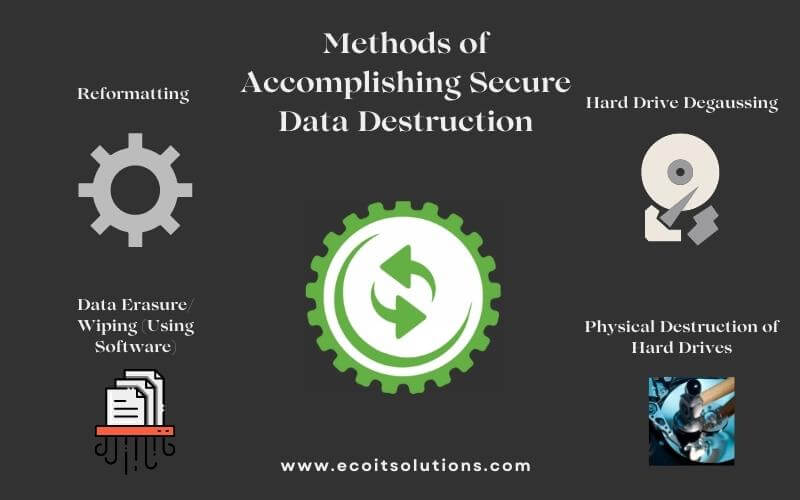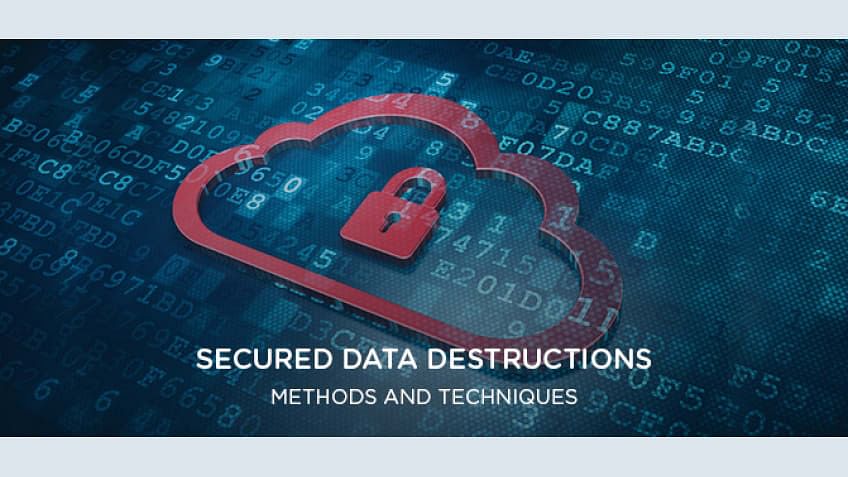Discovering the Significance of Information Damage in the Context of Computer Security Services and Protecting Confidential Data
In a period where data violations are significantly typical, the value of effective information destruction can not be overstated. When no much longer needed, Organizations must embrace rigorous steps to make certain that delicate info is not just shielded throughout its lifecycle yet also emphatically eradicated. The methods employed for data obliteration, paired with compliance to lawful requirements, play an essential duty in preserving confidentiality and count on. The implications of these techniques prolong beyond simple conformity, influencing a business's track record and functional integrity in the digital market. What methods can organizations apply to boost their information damage procedures?
Recognizing Information Devastation
Information devastation is a vital element of computer safety and security that includes the irreversible removal of information from storage tools to stop unapproved accessibility and prospective data breaches. In a significantly electronic landscape, companies face increased risks related to sensitive information being incorrectly accessed or exploited. Efficient information devastation safeguards versus these threats, guaranteeing that personal dataâEUR" such as consumer details, intellectual residential or commercial property, and monetary recordsâEUR" can not be recovered after disposal.
Comprehending the importance of data damage expands past plain conformity with lawful and regulative structures; it is crucial for keeping organizational honesty and count on. When information is poorly managed or inadequately ruined, the repercussions can be severe, consisting of economic loss, reputational damage, and legal responsibilities.

Techniques of Information Elimination

One prevalent technique is information cleaning, which entails overwriting existing data with random patterns multiple times. This technique provides the initial data irretrievable, making it a prominent option for organizations seeking to secure secret information.
Another approach is degaussing, which utilizes an effective magnetic area to interfere with the magnetic domains on storage space devices, successfully removing the information. This method is particularly efficient for magnetic media however is not applicable to solid-state drives.
Physical damage is an additional durable approach, crushing or involving the shredding of storage gadgets. This approach guarantees that data recovery is essentially impossible, making it excellent for highly sensitive information.
Lastly, file encryption can act as a corresponding strategy to data eradication. By encrypting data before deletion, companies can add an added layer of safety and security, making sure that even if residues are recuperated, they continue to be unattainable without the decryption key. Each technique should be chosen based on the degree of data sensitivity and the details safety demands of the company.
Legal Compliance and Information Safety
Organizations should navigate an intricate landscape of legal needs related to information safety, especially after executing approaches of information obliteration. Various policies, such as the General Data Protection Guideline (GDPR) and the Medical Insurance Mobility and Liability Act (HIPAA), impose rigorous guidelines on how companies must get rid of and take care of of sensitive data. Failing to abide by these laws can cause considerable lawful repercussions, consisting of substantial penalties and reputational damages.
Information devastation procedures should be thoroughly recorded to show compliance with relevant legislations and requirements. This documents not only functions as proof of adherence to legal responsibilities but likewise highlights a commitment to protecting sensitive info. Organizations ought to likewise establish clear plans relating to data retention and devastation timelines, making certain that information is not held longer than needed.

Additionally, routine audits and analyses of data destruction get redirected here practices are vital to keep conformity and adapt to evolving legal frameworks (data destruction). By proactively addressing legal needs, companies can mitigate threats connected with data breaches and show their dedication to information safety and security. Inevitably, focusing on legal conformity in data damage procedures is not just a regulative commitment, however a fundamental element of a durable data safety and security technique
Influence On Company Reputation
The credibility of a service can be dramatically impacted by its strategy to data devastation and management. In today's digital landscape, where information violations can happen anytime, the failing to correctly throw away sensitive info can result in extreme effects. Organizations that improperly manage data devastation risk subjecting confidential customer details, which not only violates personal privacy regulations but additionally erodes depend on amongst stakeholders and customers.
A ruined track record can lead to decreased customer commitment, as clients end up being reluctant to engage with a company that has demonstrated oversight in protecting their information. In addition, adverse publicity bordering an information violation can have a long-term result, as potential customers may be deterred by the viewed lack of security. This can bring about a straight decrease in earnings and market share.
Furthermore, services that prioritize data destruction as part of their safety and security strategy can boost their reputation by showcasing their dedication to securing sensitive information. By adopting rigid data management methods, companies can not only alleviate threats yet likewise position themselves as credible entities in their corresponding sectors, therefore enhancing their general brand name photo.

Best Practices for Secure Disposal
Carrying out finest techniques for secure disposal of information is essential for minimizing threats connected with information violations and guaranteeing conformity with privacy regulations. Organizations should take on a detailed information disposal plan that lays out treatments for both physical and digital information devastation.
For physical pop over to this site information storage space devices, such as hard disks, shredding or degaussing is suggested to stop information healing. Furthermore, organizations need to preserve a chain of guardianship paperwork throughout the disposal process, making certain liability and traceability of disposed things.
For electronic information, making use of software program that complies with industry standards for information cleaning is essential. This software application needs to overwrite existing data numerous times, making healing practically difficult. It is additionally essential to confirm the efficiency of the information destruction process through audits or third-party evaluations.
Educating staff members on safe disposal methods adds an additional layer of protection, as human mistake can often result in information exposure. Frequently upgrading and evaluating disposal plans ensures alignment with developing regulations and technical innovations. By carrying out these ideal practices, organizations can substantially decrease the risk of unapproved data gain access to and enhance their overall data defense approach.
Final Thought
Finally, data damage is an essential aspect of computer system security services that makes sure the defense of secret information from unauthorized accessibility. Applying reliable techniques of data removal, sticking to lawful conformity, and acknowledging the influence on organization online reputation are vital elements of a detailed data safety technique. By taking on best methods for protected disposal, companies can cultivate depend on with Discover More Here clients and secure sensitive data, ultimately adding to a much more safe and secure electronic landscape.
In a period where information violations are increasingly typical, the importance of efficient data destruction can not be overstated.Information destruction is a critical element of computer safety and security that includes the irreversible elimination of data from storage devices to avoid unauthorized accessibility and prospective data violations. Organizations needs to also establish clear policies relating to data retention and destruction timelines, making sure that data is not held longer than necessary.
By proactively resolving lawful demands, organizations can minimize dangers connected with data breaches and show their dedication to data security (data destruction). Eventually, prioritizing legal compliance in data destruction processes is not just a regulatory responsibility, yet a basic element of a durable information safety and security strategy